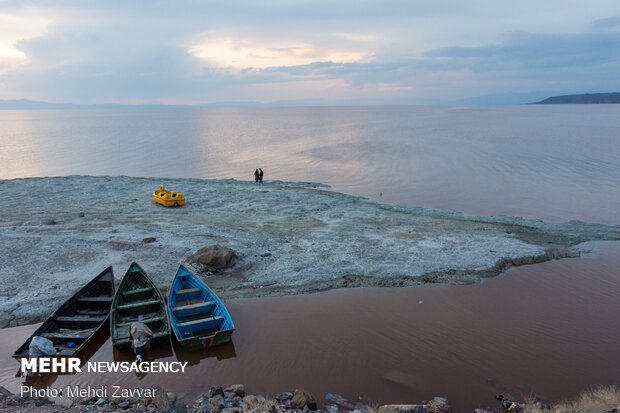About 10 years ago, Lake Urmia, northwestern Iran, began its gradual death. Photos of the country's largest saltwater lake were going viral those days, worrying every Iranian. But the lake is now experiencing its best condition over the past decade, showing signs of its former glory.
The water level of the lake, as the official said, presently stands at 1,271 meters showing an increase in comparison with its previous figure in the preceding year.
The lake has expanded to 3,209 cubic kilometers from its previous 3,125 cubic kilometers in the year before, Sarkhosh added.
Lake Urmia had dried up to 80 percent, experts warned that if restoration measures are not taken, the population living along the lake would be forced to migrate due to sand and dust storms.
According to the latest statistics of the Meteorological Organization, since the beginning of this water year, West Azarbaijan province received 279.2 millimeters of rain, which demonstrates an increase of 21 percent compared to the long-term average. Also, 396 mm of rain and snow fell in the province last year, which was 71 percent higher than the long-term average.
The above normal levels of rain came to help conservation measures to preserve the Lake Urmia which have now increased by 37 centimeters compared to [the Iranian calendar month of Farvardin (March 19- April 18)] last year.
In previous years, not providing the water right of the lake was considered as the most important cause of its gradual drying up; in the past, the main rivers in the catchment area were not dredged and due to sedimentation, the water that entered them had no way to Lake Urmia, but now all the rivers at the entrance of the dredging lake are connected to its main body.
Shared between West Azarbaijan and East Azarbaijan provinces in northwestern Iran, Lake Urmia, was once the largest salt-water lake in West Asia. It was home to many migratory and indigenous animals including flamingos, pelicans, egrets, and ducks, and attracted hundreds of tourists every year who had bathed in the water to take advantage of the therapeutic properties of the lake.
However, decades of long-standing drought spells and elevated hot summer temperatures that speed up evaporation as well as increased water demands in the agriculture sector shrank the lake drastically. In 1999 the volume of water which was at 30 billion cubic meters drastically decreased to half a billion cubic meters in 2013. Moreover, the lake surface area of 5,000 square kilometers in 1997 shrunk to one-tenth of that to 500 square kilometers in 2013.
MNA/TSN2258615























Your Comment